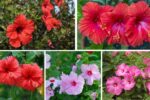When people hear peanut butter, they usually think of the creamy spread made from ground peanuts. But nature offers a fascinating surprise — a tropical fruit that tastes strikingly like peanut butter straight from the tree! Known as the Peanut Butter Fruit, this unique fruit is a rare tropical delicacy gaining attention for its unusual flavor, ornamental beauty, and nutritional benefits. In this article, we’ll explore what this intriguing fruit is, where it’s grown, its health properties, and reveal which country leads the world in Peanut Butter Fruit production.
What Is Peanut Butter Fruit?
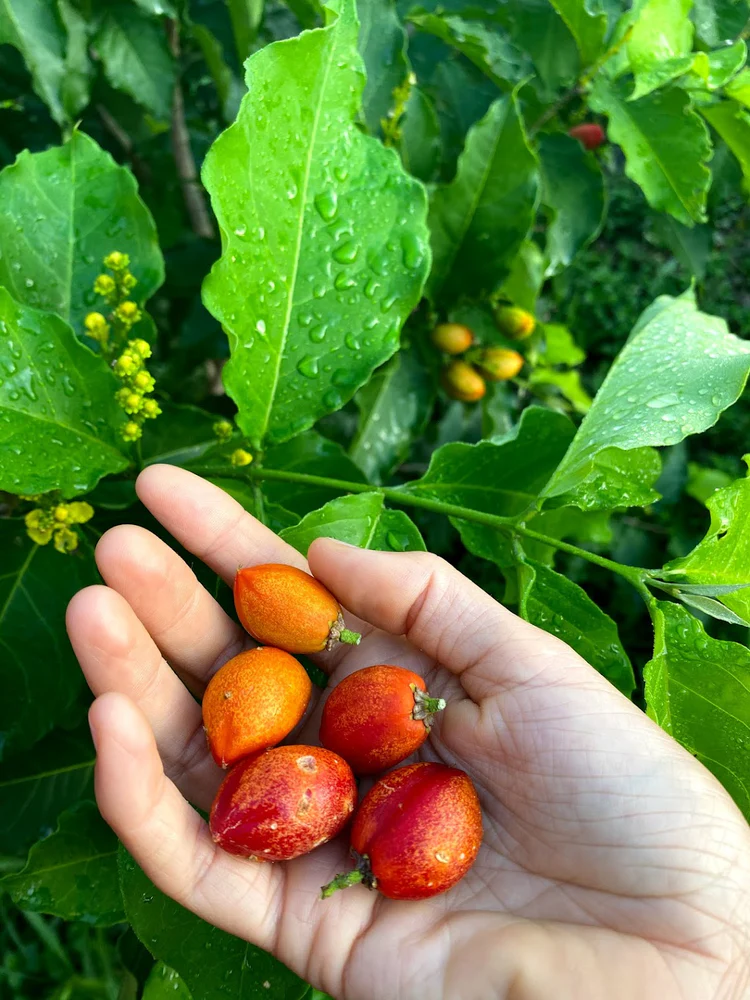
The Peanut Butter Fruit comes from a small tree or shrub scientifically named Bunchosia glandulifera. Belonging to the Malpighiaceae family, this fruit is native to South and Central America, particularly countries like Colombia, Brazil, and Peru.
The tree produces small, bright red to orange fruits about the size of a cherry tomato. When ripe, the flesh has a creamy, dense, and sweet texture with a flavor often compared to freshly made peanut butter or a blend of peanut butter and jelly. This unique taste makes it a conversation starter for tropical fruit enthusiasts and rare fruit collectors.
Key Features:
- Scientific Name: Bunchosia glandulifera
- Family: Malpighiaceae
- Native Range: South America (Colombia, Brazil, Peru)
- Fruit Size: Small (1–2 cm in diameter)
- Flavor: Peanut butter-like, mildly sweet and nutty
Nutritional Value and Health Benefits
While relatively unknown to global markets, Peanut Butter Fruit is rich in valuable nutrients. It’s a good source of:
- Vitamins A and C
- Antioxidants
- Dietary fiber
- Natural sugars
- Minerals like potassium and magnesium
In traditional uses, it’s consumed to:
- Boost immunity
- Aid digestion
- Provide quick energy
- Soothe sore throats
Some herbal practices also use it for its anti-inflammatory and antimicrobial properties.
Where Is Peanut Butter Fruit Grown?
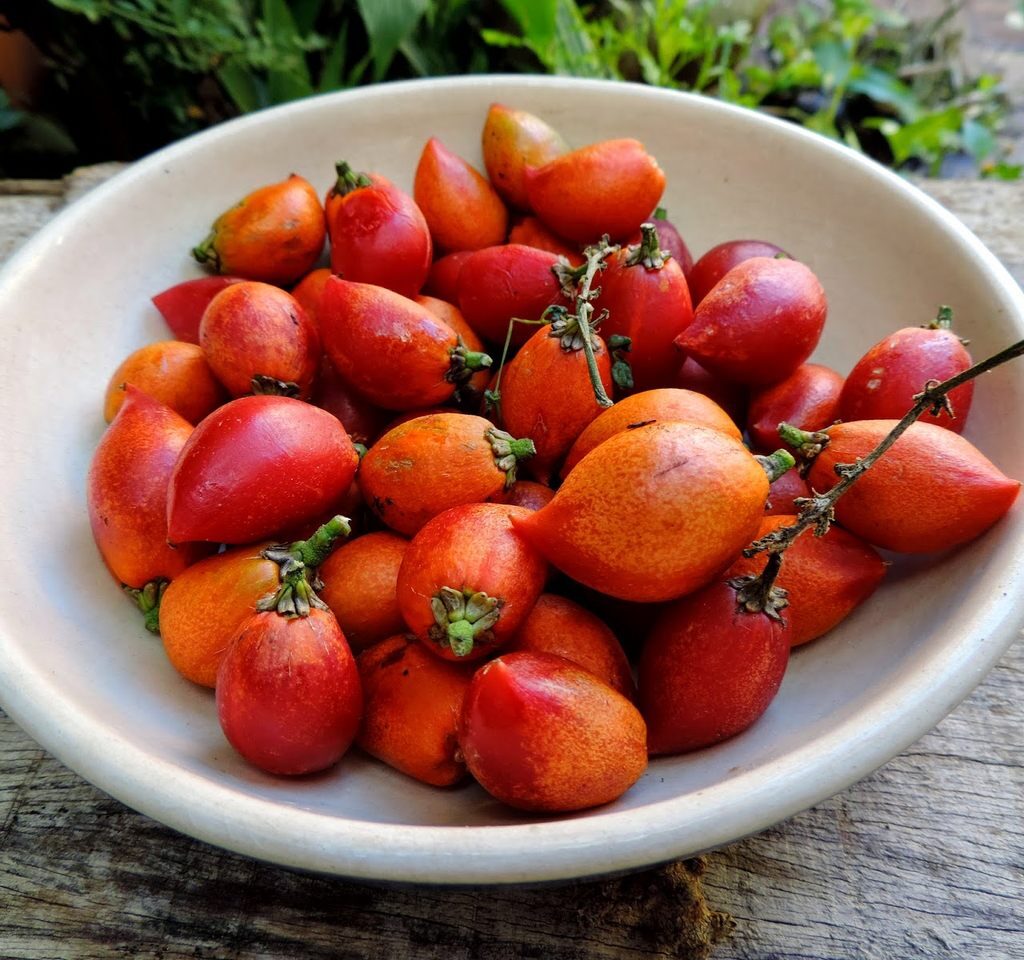
The Peanut Butter Fruit thrives in tropical and subtropical climates, preferring well-drained soils and warm temperatures year-round. Its main cultivation areas include:
- Colombia
- Brazil
- Peru
- Ecuador
- Panama
- Smaller plantings in Florida (USA), Hawaii, Mexico, India, and parts of Southeast Asia for exotic fruit enthusiasts and botanical gardens.
Which Country Is the Largest Producer of Peanut Butter Fruit?
Colombia holds the title of the largest producer of Peanut Butter Fruit in the world.
Why Colombia Leads:
- Native Range: Colombia is one of the fruit’s countries of origin, with wild and cultivated trees found in various regions.
- Ideal Climate: The country’s consistent tropical temperatures and rich, fertile soils make it perfect for Peanut Butter Fruit cultivation.
- Cultural Importance: In many rural Colombian communities, the fruit is grown in home gardens and farms for fresh consumption and medicinal uses.
- Wide Distribution: It’s found in local markets, roadside stalls, and is a staple in some Colombian households, though still largely unknown in mainstream commercial agriculture.
- Export Potential: While small-scale, Colombia supplies Peanut Butter Fruit seedlings and fruits to rare fruit collectors and specialty growers abroad.
Peanut Butter Fruit Cultivation: Global Overview
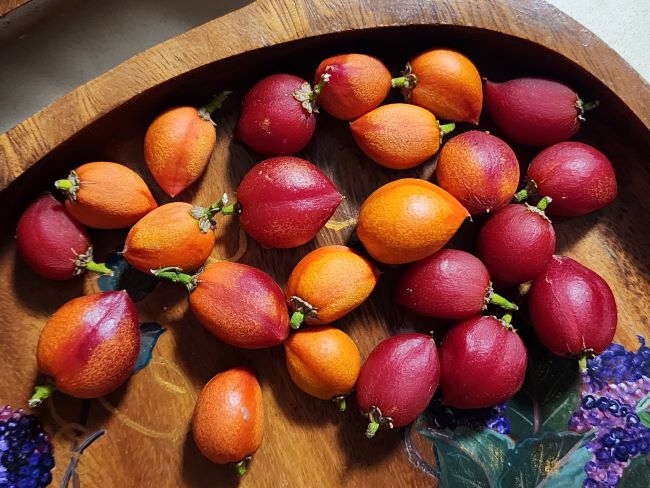
| Country | Cultivation Scale | Use | Commercialization |
|---|---|---|---|
| Colombia | Largest by far; wild and cultivated | Fresh consumption, medicinal, exports | Medium |
| Brazil | Moderate; mainly domestic | Fresh eating, gardens | Low |
| Peru | Moderate; regional specialty | Local markets | Low |
| Ecuador, Panama | Limited; home gardens | Fresh eating | Minimal |
| USA (Florida, Hawaii) | Small; botanical gardens, hobbyists | Ornamental, fresh eating | Niche |
How Are Peanut Butter Fruits Grown and Harvested?
Cultivation:
- Thrives in warm, humid tropical climates
- Prefers well-drained, loamy soil
- Requires full sun exposure
- Can be grown from seeds or grafted cuttings
- Typically fruit within 2–3 years after planting
Harvesting:
- Fruits ripen from green to bright orange or red
- Best eaten fresh, as they spoil quickly after harvest
- Fruits are hand-picked when fully colored and slightly soft to the touch
Culinary Uses
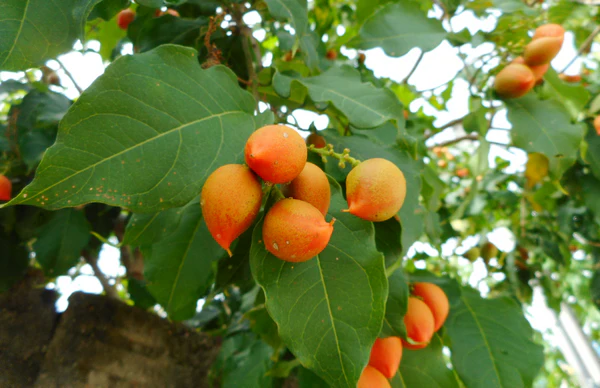
The unique peanut butter-like flavor makes this fruit ideal for a variety of uses:
- Eaten fresh off the tree
- Smoothies and milkshakes
- Homemade jams and jellies
- Desserts, ice creams, and yogurts
- Exotic fruit salads
- Traditional herbal remedies
Due to its delicate nature, the fruit isn’t suitable for long-distance commercial trade, which limits its global availability.
Medicinal and Traditional Benefits
In Colombian folk medicine, Peanut Butter Fruit has been valued for:
- Soothing sore throats
- Aiding digestion
- Strengthening the immune system
- Acting as a natural energizer
Modern nutritional analysis highlights its antioxidant and vitamin-rich profile, which contributes to anti-inflammatory and immune-boosting benefits.
Market Trends and Future Potential

Though still largely unknown outside its native range, the Peanut Butter Fruit is slowly gaining attention among tropical fruit enthusiasts, agroforestry programs, and rare fruit collectors.
Factors Driving Interest:
- Unique flavor profile
- Nutritional richness
- Potential for specialty markets and exotic fruit fairs
- Interest in novel fruit species for tropical home gardens
- Growing agro-tourism and tropical fruit farm tours
Several niche nurseries in the United States, Australia, and Southeast Asia now offer Peanut Butter Fruit trees for home gardens and boutique orchards.
Conclusion: Colombia’s Reign as the Top Producer
In summary, Colombia is by far the largest producer of Peanut Butter Fruit in the world. Its native environment, cultural familiarity, and widespread rural cultivation secure its place as the leading source of this unusual, peanut butter-flavored delicacy.
While neighboring countries like Brazil and Peru grow it regionally, and enthusiasts in places like Florida and Hawaii experiment with cultivation, none match Colombia’s production scale and cultural integration.
As interest in exotic fruits continues to rise, especially those with unique flavors and health benefits, the Peanut Butter Fruit stands poised to captivate adventurous foodies and natural health advocates worldwide — with Colombia at the heart of it all.
Summary
- Peanut Butter Fruit (Bunchosia glandulifera) is a tropical fruit native to South America.
- Known for its unique, peanut butter-like flavor.
- Rich in vitamins, antioxidants, and natural sugars.
- Colombia is the world’s largest producer, due to favorable climate and traditional use.
- Gaining interest in exotic fruit markets, agro-tourism, and home gardens.





